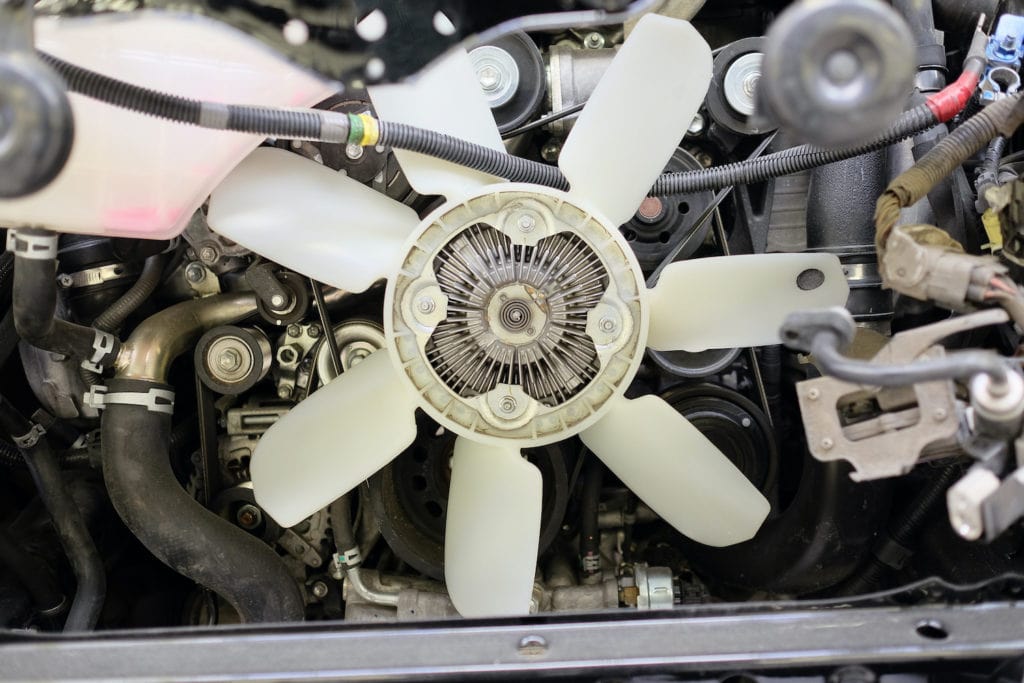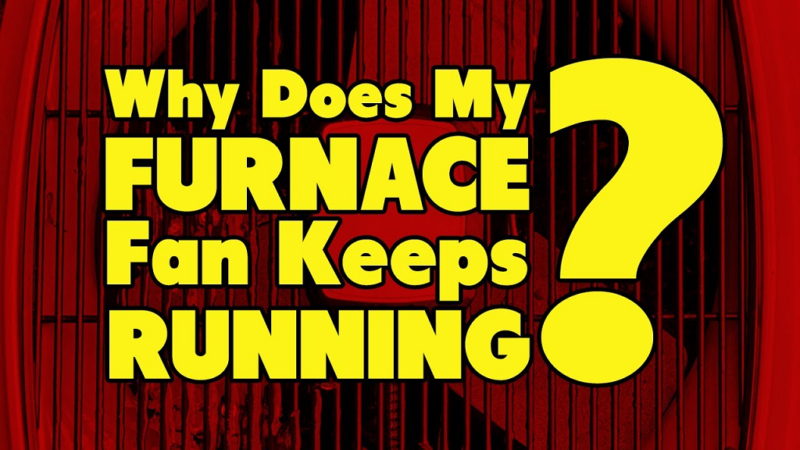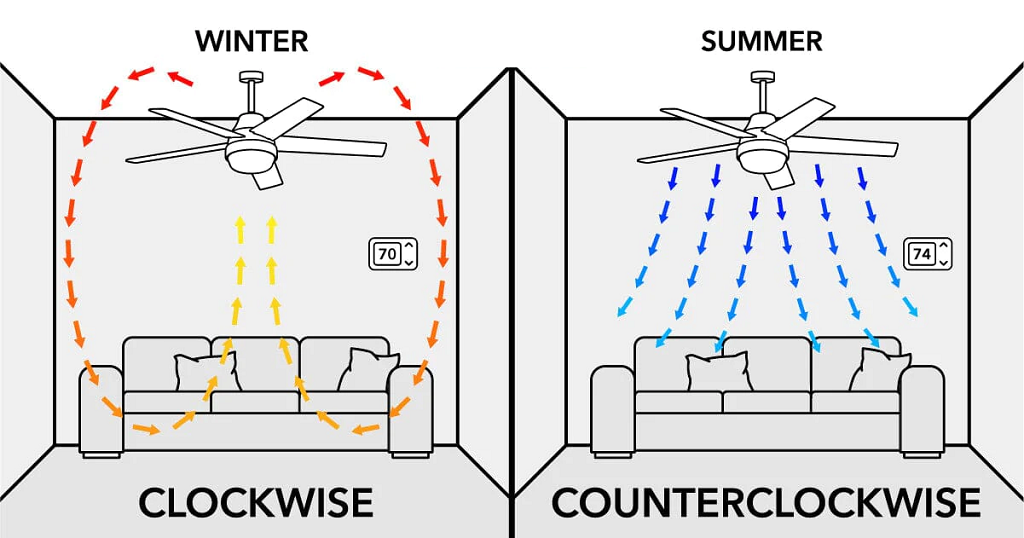Having the fan on your furnace continuously running can be annoying and unnecessary. However, there are several reasons why this happens. Understanding the causes can help determine whether this is normal or your furnace needs servicing. In the winter months, when temperatures drop, the running furnace fan continuously in winter is often a deliberate setting. This is commonly known as the “fan-on” mode, which helps distribute warm air more evenly throughout your home. Some homeowners prefer to keep the fan running constantly to maintain a consistent temperature and minimize cold spots.
Additionally, running furnace fan continuously in winter can improve air filtration by constantly circulating and filtering the air, which can benefit indoor air quality. If you find the continuous operation of the furnace fan bothersome or if there are other issues like a malfunctioning thermostat, it’s advisable to consult with a professional HVAC technician for a thorough inspection and potential adjustments.
The furnace fan, also called the blower, is an essential part of your HVAC system. Its main roles are:
- Circulate air through the furnace and ductwork
- Distribute heated or cooled air throughout your home
- Improve air quality by filtering dust and allergens
When turned on, the blower pulls air back to the furnace through the return vents. The air passes over the heat exchanger, getting warmed in the winter or cooled in the summer. It then flows back out through the supply vents into the rooms of your home.
Some key points about the furnace blower:
- It only runs when the thermostat calls for heating or cooling.
- Most blowers have multiple speeds, which are adjusted by the thermostat. Higher speeds improve air circulation.
- The blower is controlled by a limit switch that turns it on and off automatically.
Why Does the Fan Run Constantly?
There are a few reasons why your furnace fan may be staying on longer than expected or running non-stop:
1. Fan “On” Setting
Many thermostats have a setting to run the fan continuously. This allows better air circulation and doesn’t require the furnace to heat or cool actively. The constant airflow can help:
- Balance temperatures throughout the house.
- Improve comfort levels.
- Filter out dust, odors, and other airborne particles.
Look at your thermostat settings to see if the fan seems to run randomly or for long periods. See if there is an “On” or “Circulate” option that keeps it going. This is usually an intentional setting but can be turned off if desired.
2. Short Cycling
Short cycling refers to the furnace turning on and off frequently. This happens when:
- The thermostat settings are too low for winter or high for summer.
- The furnace is too large for the space being heated/cooled.
- There are airflow problems due to a clogged filter or blocked ducts.
With short cycling, the blower runs each time the furnace starts up but turns off before reaching the next cycle. This makes it seem like the fan is always on. Adjusting the thermostat or balancing the HVAC system can help prevent short cycling.
3. Excessive Running After Turning Off
It’s normal for the blower to continue running after the burner turns off. This lets it clear any remaining heated or cooled air from the plenum and ductwork. However, if it runs too long, there could be an issue.
Blower delays range from 30 seconds to a couple of minutes in most furnaces. Verify this timing against your furnace’s specs. If the fan stays on for 10+ minutes after the heating/cooling stops, have an HVAC technician inspect the unit.
4. Overheating Safety Switch
Furnaces have safety devices to prevent overheating in case of malfunctions. If temperatures get too high, a limit switch shuts off the burner but keeps the blower going. This cools the furnace before it allows heating to resume.
If something is causing the furnace to overheat, the blower will run continuously trying to cool it down. The airflow might stop briefly but restart right away. This safety feature protects the furnace from damage but indicates a problem that needs diagnosis.
5. Failed Bearings or Motor
The blower motor and bearings are constantly running during furnace operation. Over time, they can wear out or break. Symptoms include:
- Loud, grinding noises coming from the furnace.
- Fan seems to struggle turning and maintaining speed.
- The blower runs non-stop, even when the furnace is off.
Failed components cause the control board to activate the fan to avoid overheating from friction. Replacing bearings or the motor will resolve this issue.
6. Stuck Blower Relay
The fan relay triggers power to the blower motor whenever heating or cooling is needed. If this relay sticks, it will continue sending power even when not called for. The fan then runs indefinitely.
Tap the relay gently to see if the contacts are unstuck. Otherwise, a technician will need to replace the faulty relay. This is a relatively inexpensive fix.
7. Faulty Control Board
The control board regulates when the blower activates based on signals from the thermostat. If its blower control circuit fails, the fan can switch on and stay on. The board will need a replacement to correct the problem.
8. Unbalanced Airflow
The blower should push an equal amount of air through each supply vent. If airflow is considerably lower at some vents, it strains the motor. Trying to compensate, the blower runs longer to reach equilibrium.
Balancing the airflow requires adjusting the duct dampers. A technician can measure output at each vent and make the necessary modifications. This improves efficiency and prevents overworking the fan.
Is Continuous Fan Operation Okay?
Leaving the furnace fan continuously won’t cause any issues, provided it runs in a low to medium setting. At higher speeds, the increased airflow can potentially:
- Over-conditioning the home meaning cool it too much in summer or excessively drying it during winter.
- Create uncomfortable drafts or noise.
- Lead to premature motor wear or failure.
- Waste energy and increase electrical costs.
Check your furnace manual for steady blower settings and time limits. As long as you remain within the manufacturer’s guidelines, running it 24/7 is fine. Just monitor usage and comfort levels.
Should the Fan Run in Summer?
During the cooling season, it’s common for the furnace fan to stay on for long periods, even continuously. There are benefits to keeping it going:
- Circulates cooled air through the home.
- Evens out temperatures from room to room.
- Reduces humidity indoors.
- Filters dust and pollen.
The constant airflow does increase electrical costs. You can minimize this by adjusting the thermostat fan setting to a slower, steadier speed versus maximum power. Overall, it’s usually advantageous to run the blower during summer.
At What Temperature Should the Fan Run?

Furnace fans don’t directly correlate to a set temperature. Blower speeds vary to match the heating or cooling demand, as called for by the thermostat. However, you can use these general rules of thumb:
Heating Mode:
- Low speed for milder weather around 45°F or higher
- Medium speed at 35 – 44°F
- High speed at temps below 35°F
Cooling Mode:
- Low speed when over 75°F
- Medium speed at 65 – 74°F
- High speed below 65°F
Higher fan speeds circulate more air to meet greater heating or cooling requirements. Adjust speeds based on your comfort and noise levels.
Is My Fan Cycling On and Off Normal?
It’s completely normal for the furnace blower to cycle on and off intermittently. This occurs for a few reasons:
Meeting Heating/Cooling Demands
The thermostat calls for the fan when it needs to heat or cool the air. Once the desired temperature is reached, the blower shuts off. As the interior temp fluctuates, the fan cycles back on.
Preventing Overheating/Overcooling
If the blower operated non-stop, it would over-condition the home and waste energy. Short cycles prevent this.
Reducing Humidity
In humid climates, cycling dries out indoor air. The blower runs just long enough to remove moisture but avoid overcooling.
Cleaning Ductwork
Fan cycling circulates air through the ducts to filter out debris.
The optimal cycle duration is around 10-15 minutes. Shorter intervals indicate an oversized HVAC system. Longer cycles mean it’s struggling to maintain temperature.
At What Ages Should You Replace a Furnace Fan?
The expected lifespan of a furnace fan motor is 10-15 years under normal use. Ball bearing models tend to last longer, up to 20 years. Signs your blower motor needs replacing include:
- Grinding, squeaking, or rattling noises
- Slow starting or delayed acceleration
- Overheating and tripping the thermal cutoff
- Visible cracks in the casing or melted wires
- Constant overheating of the furnace
Fan motors have few repairs aside from oiling bearings or clearing dust buildup. Replacement restores proper performance. Given the labor costs, replacing the entire furnace after 15-20 years is recommended.
How Much Does It Cost to Replace a Furnace Fan?

Replacing just the furnace fan motor costs an average of $150-$600. Prices vary based on:
- Motor type – Belt drive or direct drive
- Blower size
- Single stage, multi-stage, or variable speed
- Aftermarket versus OEM part
- Labor for installation
You may also need other repairs which add to the total:
- Fan blade – $50-$150
- Bearings – $50-$150 per bearing
- Capacitor – $50-$150
- Circuit board – $200-$500
It often makes sense for older furnaces to replace the entire unit rather than repair individual components. New high-efficiency models provide better performance and much lower energy use.
Expect to pay $4,000-$12,000 to replace the full furnace. Local utility companies sometimes offer $300-$500 rebates when upgrading to qualifying energy-efficient units.
What Causes the Fan to Run Slowly?
If the furnace fan is struggling to turn or maintain proper speed, possible causes include:
Worn Bearings
Ball bearings allow the motor shaft to spin smoothly. Over time, dirt and friction wear them down. Replacing the bearings restores full speed.
Obstructed Fan Blades
Dust, debris, or drooping ducts can physically block the fan blades. Cleaning and straightening ducts get rid of the obstruction.
Incorrect Voltage
Motors require a specific voltage, usually 115V. If power drops below 110V, the fan loses torque. Low voltage typically indicates loose wiring.
Defective Capacitor
The motor capacitor boosts starting torque and maintains speed. If it fails, the fan can’t accelerate properly or hums at low RPMs. Replacing the bad capacitor is a quick fix.
Incorrectly Sized Motor
Using an under-powered motor stresses the unit trying to move enough air. Get professional advice to match the right capacity for your HVAC CFM requirements.
Damaged Motor
Issues like burned windings, bent shafts, and heavy grime buildup indicate a worn-out motor. At that point replacement is the only option.
Furnace Fan Troubleshooting Tips
Here are some basic troubleshooting steps if your furnace fan is acting up:
- Listen for sounds – Grinding or squealing points to a bad motor or bearings.
- Check the airflow – Use tissue paper to compare outlet air volumes throughout the house.
- Remove debris – Clean dirt, lint, and dust around the blower housing.
- Inspect the motor – Look for leaks, damaged screws, or burned wiring.
- Test the capacitor – Use a multimeter to check microfarad values against spec.
- tighten electrical connections – Loose wiring can cause voltage drops.
- Measure amp draw – Unusually high or low amps indicate an undersized/oversized motor.
- Clear dust buildup – Clogged ducts put extra strain on the fan.
- Have a professional inspect – If issues persist after basic troubleshooting, call an HVAC technician. They have specialized tools and training to diagnose furnace fan problems accurately.
Routine maintenance also helps minimize blower issues. Change filters monthly, have annual tune-ups, and keep debris clear of vents.
Frequently Asked Questions
How often should my furnace fan run?
- It’s normal to cycle on and off dozens of times per day to maintain set temperatures. Run times range from 10-45 minutes per cycle depending on conditions.
Why does my fan run after the furnace shuts off?
- This “fan-on delay” purges excess heat from the plenum to avoid short cycling. It typically runs 30-90 seconds after heating stops.
Can I leave my fan on all the time?
- Running it continuously at low or medium speed will improve air circulation. Just monitor humidity levels and avoid excessive runtimes.
How can I tell if my fan motor is bad?
- Listen for odd noises, check for visible damage, test if it reaches full RPMs, and look for signs it’s overheating the furnace.
Why does my blower make loud humming noises?
- Worn ball bearings are a common cause. Low airflow due to blocked vents can also make it resonate loudly.
How much does it cost to replace a furnace fan?
- Expect to pay $150-$600 for just the fan motor or $4,000-$12,000 to replace the entire furnace.
Conclusion
Having your furnace fan constantly running can seem strange, but it is often normal. The blower must be activated frequently to keep air properly heated or cooled. Issues arise when it operates non-stop without cycling or making discomforting noises.
Check your thermostat settings first to ensure the fan isn’t purposely being kept on. If it continues to run all the time without reasonable cause, inspect the ducts for blockages and have an HVAC professional diagnose the furnace. Anticipate needing minor repairs like replacing bearings or the capacitor. For optimal HVAC system performance, consider upgrading to a new high-efficiency furnace if yours is older, ensuring energy savings and a reliable, quiet blower. Extend the system’s lifespan by scheduling regular seasonal maintenance and diligently replacing filters.


